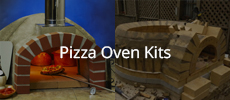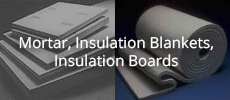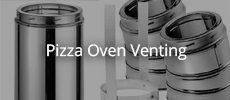Hey Toiletman congratulations on getting the entry arch finished. That is a big achievement. It is looking great. How log till you can start your curring fire's.
Randy
Announcement
Collapse
No announcement yet.
31"/800mm in Eindhoven, the Netherlands: Design critique and build topic
Collapse
X
-
Took the form out and .... it stands! (sorry for the crappy picture quality, my phone doesn't do dark very well).
The rear stones around the keystones seem a little too lean, but so far it's self supporting and I cleaned it up. Might add a little bit more mortar tomorrow to those lean stones or save it for after the holiday.2 Photos
Leave a comment:
-
Thanks for the further clarification david s . Great design: both technically as well as a fun aesthetic!Originally posted by david s View PostThe diagonal cuts in the sleeve provide secure adhesion to the gallery, not for any venting purpose. I surround the sleeve with some dense castable about 100m highto cover them the sleeve not being a full circle allows for it to have some expansion relief.
I just catered for a function last night. Here are some pics with flue in and out before lighting. We affectionately call him Augustus Gloop.
I've been again moving at a glacial pace, but today was a great milestone: the chimney arch is in! It's still supported by the form, so I'll take it out tonight to clean-up the inside (it's a mess) and hopefully will still have a standing arch after that.
See the pictures and below explanation for some further details:- It was necessary to cut another brick in the sidewall diagonally so properly support the arch and accomodate the height of the sidewalls due to the extra high joints. This became quite ugly and will probably become a very thick joint as the actual arch became once again higher.
- I worked with quite wet mortar again, like with the dome arch, but this time my form was not closed, but open. This led to quite some mortar droop. I hope some of the vertical joints didn't loose their complete mortar, because then of course I'll have a collapse on my hands tonight.
- Getting the bricks and joints to look nice was quite some work, but with a lot of wedges and proper marking it went in quite well today
- The thermal gap will need its cord and kit still. This should be fine, but it was quite some work to get it cut correctly and hopefully I managed to keep it clean of mortar. For the people that fitted these cords and kit while mortaring in the bricks: how did you do that? doesn't it become a crazy mess with all the mortar joints?
6 Photos
Leave a comment:
-
The diagonal cuts in the sleeve provide secure adhesion to the gallery, not for any venting purpose. I surround the sleeve with some dense castable about 100m highto cover them the sleeve not being a full circle allows for it to have some expansion relief.
I just catered for a function last night. Here are some pics with flue in and out before lighting. We affectionately call him Augustus Gloop.
Last edited by david s; 09-25-2024, 09:03 PM.
- Likes 1
Leave a comment:
-
Thanks for your input and pics david s , that's extremely helpful. It also seems that you have got the cost optimization down to an artOriginally posted by david s View PostYour assumptions about my drawing are all correct. Not totally sure about your drawing, but I think you get the idea. You do have a rather sharp angle for the smoke to make into the gallery, but I'm sure it will work ok as shown. Because vermicrete is relatively weak, I use about a 6:1 mix there which provides enough stability for the base of the flue pipe at the same time as providing enough give. Yes I do allow a slightly loose fit between the pipe and the flue gallery collar. .
.
Since today is a rainy day I can't continue on the arch form, so instead I'm exploring the possible flume mold a little bit more. You were spot on with your judgement of the angles: I've attached a pic of the smoke channel (the actual casted material will go around), and it shows the angle is about 30 degrees. I'll try raising the chimney to make it 45 and see how that looks.
Trying to make sense of your picture, so please bear with me with some additional questions: you have used a thin sheet metal sheet to form the collar to connect the removeable pipe to the oven. That collar will stay permanently attached to the oven?Originally posted by david s View PostRegarding a sleeve for removable flue which I have done for all mobile ovens as well as a number of fully completed builds that require long travel distances, I/ve added some pics which should tell the story of how I do it. The little tags on the end of the sleeve prevent the pipe from going too deep into the sleeve.
The first pic of the sleeve is of course upside down.Second pic shows some plasti wrapped around the pipe to prevent the castable from sticking to the pipe and makes removal easier. Of course it is then discarded allowing a nice smooth fit.
Having done this many times it is not as laborious as it looks and it's now not too much more trouble than doing it the usual non-removable way.
Regarding punching holes in the pipe, I’d strongly suggest you don’t try that. Although the stainless is thin (0.5 mm) it’s very strong and you’ll distort the pipe way too much, especially as you intend making it slide nicely in a sleeve. Far better to drill holes. But be sure to use slow speed lots of pressure. Start with about 3.5 mm the enlarge to 6mm. About 6 should be enough to allow some stem to pass to relieve pressure but not enough to distort the pipe
In this collar you manufactured tabs for the pipe to rest in, and with the initial plastic you ensure a nice snug fit. I'm assuming the diagonal cuts you made are the 'vent holes' to allow steam to escape from the insulation into the chimney?
Good tips to for drilling holes, for some other stainless work I spent some time until I found the right type of drills, but I now have 'em. With the adapter I had in mind the pipe would be far above the holes, but your solution seems much more cost effective, and also uses materials that can be sourced right around the corner.
Do you have any experience with condensation rolling down the chimney finding its way into the vermicrete? I was thinking it could be solved by adding some beads of high temperature kit on the outside (see picture).3 Photos
Leave a comment:
-
Your assumptions about my drawing are all correct. Not totally sure about your drawing, but I think you get the idea. You do have a rather sharp angle for the smoke to make into the gallery, but I'm sure it will work ok as shown. Because vermicrete is relatively weak, I use about a 6:1 mix there which provides enough stability for the base of the flue pipe at the same time as providing enough give. Yes I do allow a slightly loose fit between the pipe and the flue gallery collar.
Regarding a sleeve for removable flue which I have done for all mobile ovens as well as a number of fully completed builds that require long travel distances, I/ve added some pics which should tell the story of how I do it. The little tags on the end of the sleeve prevent the pipe from going too deep into the sleeve.
The first pic of the sleeve is of course upside down.Second pic shows some plasti wrapped around the pipe to prevent the castable from sticking to the pipe and makes removal easier. Of course it is then discarded allowing a nice smooth fit.
Having done this many times it is not as laborious as it looks and it's now not too much more trouble than doing it the usual non-removable way.
Regarding punching holes in the pipe, I’d strongly suggest you don’t try that. Although the stainless is thin (0.5 mm) it’s very strong and you’ll distort the pipe way too much, especially as you intend making it slide nicely in a sleeve. Far better to drill holes. But be sure to use slow speed lots of pressure. Start with about 3.5 mm the enlarge to 6mm. About 6 should be enough to allow some stem to pass to relieve pressure but not enough to distort the pipe
Last edited by david s; 09-23-2024, 07:01 PM.
Leave a comment:
-
That's an interesting suggestion. I think he posted it already here also, but I didn't fully grasp it at the time. Let me reproduce the sketch below, together with the proposed version for my oven. Some questions on the design david s :Originally posted by nlinva View PostA very belated response to your question about the chimney anchor plate (post #39). I'm now also at the stage of working with that too. I went ahead and bought the (indeed quite expensive) anchor plate for the vent system I am using. It is much too large, so I'm cutting it down a bit. Moreover, in retrospect perhaps I didn't even really need it.
david s offered some ideas about how to go without a plate altogether at post #75 on my build; the link he provided is https://community.fornobravo.com/for...ery#post446435 (hope that works).- I'm assuming there's a gap in diameter between the gallery and the bottom of the flue, but the vermicrete is tight up to it? The slightly flexible vermicrete/blanket allows thermal expansion? Do you use a coarse type of vermiculite there? Mine is pretty fine, I would expect it to be expanded to dust after a while?
- You seem to add blanket and vermicrete in the cross section of the flue, do you do that full-round? basically adding a 'bump' around the flue? From your pictures that seems to be the case.
- Have you made any designs with removable chimneys?
See attached sketch for the rough idea. I'm also considering punching holes in the inner pipe, such that steam inside of the vermicrete can escape. However, see below for some further thoughts on this.
From the documentation that I've seen on the 'condensation' connections on chimney pipes, their story is mainly about the moisture in the fumes condensing. Either due to cold pipes, or after firing. This then drips down into any dead-ends, which you typically have when connecting a stove/furnace type of apparatus. As we don't have dead ends and fire at quite high temperatures I'm not too worried about this problem. Worst case you have some drops falling onto the floor tiles in your gallery, but that's not a place where you should be too worried about a little bit of moisture (assumption).Originally posted by nlinva View PostAs for condensation -- I think in general the problem is that rain & damp can enter unless you apply some kind of flexible silicone gasket connecting the outer cover of the oven to the chimney pipe. Normal stucco or render might not be flexible enough to handle the pipe's tendency to expand. My current plan is to take a terracotta flowerpot and saw off the bottom to make a collar, and connect the collar to the chimney pipe with high temp silicone. The flowerpot will sit on insulation (so its bottom will not directly touch either brick or anchor plate), and can also be filled with insulation to reduce possible temperature shocks it might be exposed to.
The only worry I have is in punching some holes in the inner pipe to allow steam to escape from the vermicrete/blanket: this would also be a great way in for any drops of condensation rolling down the inner pipe.
As to rain or moisture rolling down the outer pipe and creeping into the gap I plan on using a similar approach as you and others are doing with terracotta disks and flexible seals. This should prevent any direct ingress.
PS: status update on the oven:- Gallery arch stones have been cut to size, cutouts for the gap between inner and outer arch still to be cut by grinder
- Cleaned out the wet saw and put it inside to prepare for the 'wet and cold' season. The cuttings had some nice layerings due to cutting light firebrick, red brick and granite :-D
- Currently building the gallery arch mold. Hope to finish it on wednesday and maybe put in the arch in the weekend
- Seriously considering casting the arch to chimney connection: would allow me to do this inside during the winter, make a much nicer shape to increase draw and save a lot of weight on top of the arch. As you also mention nlinva I was a little bit too proactive in ordering materials and now find out that I missed some chimney parts and might end up paying double shipping costs in the end anyway...
2 Photos
Leave a comment:
-
A very belated response to your question about the chimney anchor plate (post #39). I'm now also at the stage of working with that too. I went ahead and bought the (indeed quite expensive) anchor plate for the vent system I am using. It is much too large, so I'm cutting it down a bit. Moreover, in retrospect perhaps I didn't even really need it.
david s offered some ideas about how to go without a plate altogether at post #75 on my build; the link he provided is https://community.fornobravo.com/for...ery#post446435 (hope that works).
As for condensation -- I think in general the problem is that rain & damp can enter unless you apply some kind of flexible silicone gasket connecting the outer cover of the oven to the chimney pipe. Normal stucco or render might not be flexible enough to handle the pipe's tendency to expand. My current plan is to take a terracotta flowerpot and saw off the bottom to make a collar, and connect the collar to the chimney pipe with high temp silicone. The flowerpot will sit on insulation (so its bottom will not directly touch either brick or anchor plate), and can also be filled with insulation to reduce possible temperature shocks it might be exposed to.
Leave a comment:
-
A small update:
In between the rainstorms today I've managed to cut the diagonal topping bricks of the gallery. It was quite some intricate cutting, trying to stagger in the buttress as well. I also found out that the walls have become slightly too high, so I'll have to chop a bit off the already laid bricks... otherwise the arch won't close off the dome arch. Ah well, you live and learn... I hope I'll be able to put in some decent cuts and not ruin the nice look of the gallery so far.
2 Photos
Leave a comment:
-
Wow man, you've been baking! I'm working on the diagonally cut bricks for the sides of the gallery... then it's time for the arch. Hope to finish it before it really starts getting wet and cold. Curing fires and baking is probably going to be next season.Originally posted by RandyJ View PostToiletman the build is coming along very nicely. It won't be long and you will be cooking too. My son wanted pizza to celebrate the last day of summer before he went back to school. So I made pizza again and now have mad 46 pizza in this oven. Hopefully I can hammer out the rest of my pavilion now that I am not working 60hrs a week and very stressed out.
Randy
Leave a comment:
-
Toiletman the build is coming along very nicely. It won't be long and you will be cooking too. My son wanted pizza to celebrate the last day of summer before he went back to school. So I made pizza again and now have mad 46 pizza in this oven. Hopefully I can hammer out the rest of my pavilion now that I am not working 60hrs a week and very stressed out.
Randy
Leave a comment:
-
Thx for the compliments and tips. I had the copper variant already on order, so I'll have to do with it.Originally posted by nlinva View PostYour granite front landing looks great! I have something similar planned for my oven, but in slate (and also with a simpler right angle joint -- I don't think I can do 45 degrees accurately enough :-)
As for the high temp silicon, Permatex's own website suggest that for even higher temperatures than the Permatex Ultra, you can use Permatex Optimum Red. Maybe worth a look.
For the rope, are you planning to put it right in the corner, or on the face of the arch, or on the side/top? I'm trying to think through what the pluses/minuses are of those options. On the face seems most straightforward, but on the side/top might make it less likely to get rope fraying accidentally enter the landing space, even if the silicon gasket fails. Not sure it would make a real difference, though.
I'm planning on having the rope on the side/top and the gasket on the face. Like you said: sealing on the sensitive side, and having the risky part the furthest away as possible, close to where the other nasty fibres are going to be (insulation blanket).
Leave a comment:
-
You are right, the Permatex Optimum red is higher rated than the Ultra Copper. I've not seen it before, it must be a relatively newer developed product, as the Ultra Copper used to be their highest rated silicone. Thanks for posting. I think I'll switch to it.Originally posted by nlinva View PostYour granite front landing looks great! I have something similar planned for my oven, but in slate (and also with a simpler right angle joint -- I don't think I can do 45 degrees accurately enough :-)
As for the high temp silicon, Permatex's own website suggest that for even higher temperatures than the Permatex Ultra, you can use Permatex Optimum Red. Maybe worth a look.
For the rope, are you planning to put it right in the corner, or on the face of the arch, or on the side/top? I'm trying to think through what the pluses/minuses are of those options. On the face seems most straightforward, but on the side/top might make it less likely to get rope fraying accidentally enter the landing space, even if the silicon gasket fails. Not sure it would make a real difference, though.
Regarding the slate vs granite, I think you've made a wise choice given granites dislike for temperature, but coat the slate with a good quality sealer, to prevent fat and oil stains.Last edited by david s; 08-29-2024, 04:18 AM.
Leave a comment:
-
Your granite front landing looks great! I have something similar planned for my oven, but in slate (and also with a simpler right angle joint -- I don't think I can do 45 degrees accurately enough :-)
As for the high temp silicon, Permatex's own website suggest that for even higher temperatures than the Permatex Ultra, you can use Permatex Optimum Red. Maybe worth a look.
For the rope, are you planning to put it right in the corner, or on the face of the arch, or on the side/top? I'm trying to think through what the pluses/minuses are of those options. On the face seems most straightforward, but on the side/top might make it less likely to get rope fraying accidentally enter the landing space, even if the silicon gasket fails. Not sure it would make a real difference, though.
Leave a comment:
-
Another tiny update: the first two rows of chimney are in, pointed and cleaned up to accept the BBQ griddle. Of course precision masonry remains an illusion. Even with a gap-tool I didn't manage to have the joints large enough to accept the aluminium 'rail' that I had planned on using to prevent wear by the griddle on the stones. Alas, the griddle itself fits and there's ample space for expension differences to be accommodated.
The search for a high temperature sealant posed quite a challenge. I found a black, fire proof elastic kit that I used to put in the granite slab. Turns out 'fireproof' was not actually fireproof, but a safety feature to delay fires... the kit starts swelling above 120C/250F . All the 'oven' kits that I do find say they're resistant up to 1200C/2200F, but non of them remains elastic. It seems this is the kind of product used to glue the 'fire rope' in place, with the rope offering the flexibility at high temperatures. So in the end I'll go with david s 's recommendation of Permatex Ultra for the high temperature flexible seal. Then I'll use the HT glue to glue in the fire rope around the back of the chimney. Similarly to mongota 's design, but with only one fire rope. See picture to clarify.
. All the 'oven' kits that I do find say they're resistant up to 1200C/2200F, but non of them remains elastic. It seems this is the kind of product used to glue the 'fire rope' in place, with the rope offering the flexibility at high temperatures. So in the end I'll go with david s 's recommendation of Permatex Ultra for the high temperature flexible seal. Then I'll use the HT glue to glue in the fire rope around the back of the chimney. Similarly to mongota 's design, but with only one fire rope. See picture to clarify.
Cutting more bricks for the next rows will have to wait until the weekend, as it's hitting high temperatures around here again (30C/86F+).4 Photos
Leave a comment:





Leave a comment: